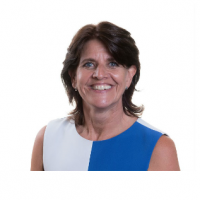What Works for Children’s Social Care have recently published their report on social workers in schools – a pilot study run over a little more than a year in Lambeth, Stockport, and Southampton.
The report, which compiles qualitative and quantitative research conducted by Cardiff University, highlights many positives of this programme, which is nice to hear. However, I continue to have reservations about the project and believe the detail behind the delivery and wider impacts and unintended consequences need to be considered.
Working together in identifying and managing risk to children and young people is challenging work. It understandably causes professional anxiety to get it right. It is understandable therefore that the idea of placing social workers into schools sounds like an appealing approach to schools.
Placing social workers in schools manages the risk and adds capacity to work with these children and families. Doesn’t it?
To answer that question, we must consider some key issues in this approach so as not to inadvertently undermine the wider partnership agenda in working with families and achieving outcomes for children and young people in appropriate, proportionate and timely way.
We need to consider:
- The role of schools and education providers in delivering Early Help
- The reality that “risk” exists across the threshold/levels of need and cannot be boxed into the workload of an individual role/function
- The shortage of qualified social workers working in child protection
- The rights of families to receive early help and support outside of the statutory framework
- The best use of the qualified social work resource
- The consistency in application of services to families within recognized frameworks with statutory good practice for recording and decision-making being clear to all partners, but also to parents and young people.
The sharing of information and relationship-based practice are essential parts of good practice and to ensuring agencies work together. Placing social workers in schools appeals because it promises to build those links between groups of professionals, locates social workers in the heart of a universal service for young people, and helps to normalise the existence of social workers.
However, from our experience in Worcestershire, we know that it isn’t always that simple. In 2015 we had a similar programme using ‘Community Social Workers’ linked to schools to undertake assessment of need, offer “consultation” to schools and do some direct work. The programme was well liked by schools, and the social workers involved, but I identified a range of concerns in my first review of the programme. I found that:
- Social workers were performing the kinds of task that are really the role of the designated safeguarding lead
- Social workers were undertaking activities of family support worker / pastoral care role
- The assessments being completed with families were neither a social work assessment nor an early help assessment
- There was no clear consent from families to the sharing of information between the social worker and school
- There was no joint recording of the advice and consultation taking place, although schools were recording their own and acting on their interpretation of those conversations.
- There was a significant challenge with recruitment of qualified social workers, yet we had eight qualified workers undertaking a role that, by and large, did not require a social work qualification.
- The process for recording work meant we were unable to properly capture the workload of the ‘community social workers’ on a day to day basis
- There was no evidence that the role was reducing referrals into the social work ‘front door’, only adding stages to the process by which a school identified a concern that needed a referral
- Social workers in the services were having minimal opportunity to develop positive relationships with school because the community social work role was acting as a barrier between the two.
- As schools with a community social worker very much valued and appreciated this function, the demand from other schools grew. We have over 240 schools in Worcestershire!
The issues I identified made child protection practice unsafe and inconsistent, it undermined the role of schools in identifying and managing risk in early help and caused confusion for professionals and for parents, blurring of the lines between the early help offer of the school and the safeguarding role of the children’s services.
I’m pleased to see the report published and the early indicators of positive outcomes it identifies. I understand that the detailed development and delivery of such a programme can make all the difference. However, I am pleased to see that whist recognising the positives experienced in these pilots, the roll out is taking care and attention to the way this work moves forward so that other projects can learn from those who have experienced mistakes.


